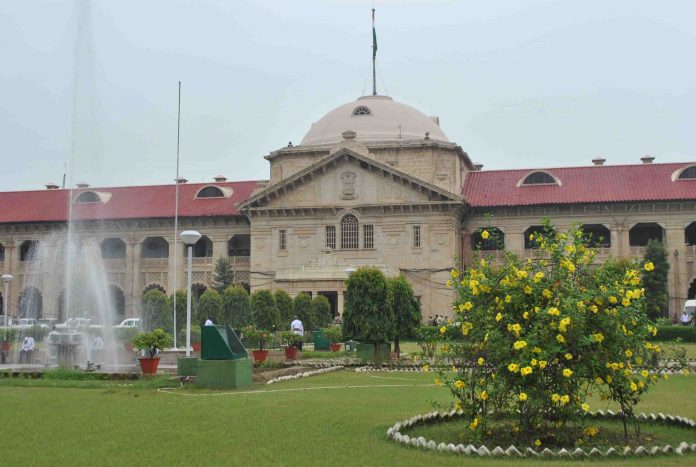The Allahabad High Court on Wednesday said both civil and criminal proceedings can be taken in the case of encroachment on pasture land of the village. Refusing to quash an FIR lodged against an encroachment on pasture land of public use, the court said the village had demarcated the land for pasture by everyone.
The division bench of Justice Anjani Kumar Mishra and Justice Anil Kumar passed this order while hearing a criminal misc writ petition filed by Devnath Yadav.
The Writ Petition has challenged the first information report dated October 18, 2017, to Case under Sections 2/3/5 of the Prevention of Public Property Damages Act, 1984, police station Kandharapur, district Azamgarh.
According to the first information report, the petitioner, Manager of Gujrati Devi Inter College, Azamgarh, has constructed a boundary wall and encroached upon plot no.8332 measuring 2.132 hectares, which land according to the Petitioner’s Counsel is recorded as pasture land in revenue records.
The contention of counsel for the petitioner is that a detailed procedure is prescribed under the Revenue Code, 2006 for eviction of unauthorized occupants from gram sabha property.
Therefore, the first information report should not have been lodged, and it is the abuse of the process of law.
It has been further submitted, relying upon the judgement of this Court dated August 06, 2020, passed on an application under section 482 Munshi Lal and another Vs. State of U.P. and another, that a complete procedure has been provided under the Revenue Code, 2006 for eviction of unauthorized occupants from Gram Sabha property and therefore, the provisions of the Prevention of Damage to Public Property Act, 1984 cannot be invoked against such unauthorized occupant.
The application under Section 482 Cr.P.C. wherein the judgement cited was rendered was one directed against a charge sheet filed against the applicant therein, under Section 2/3 of the Prevention of Damage to Public Property Act, 1984.
AGA has submitted that the proceedings for eviction of unauthorized occupants under Section 67 of the revenue code, 2006 are summary proceedings and that the provisions of Prevention of Damage to Public Property Act, 1984 can be simultaneously invoked against an unauthorized occupant if the bundle of facts alleged to constitute an offence under the Act.
Also Read: Allahabad HC says its nod required before setting up UP Education Services Tribunal
Thereunder, a person can be sentenced to imprisonment, which cannot be done under the provisions of the Revenue Code, 2006.
It is no doubt true that Section 67 of the Revenue Code, 2006 provides a complete procedure for eviction of unauthorized occupants of Gram Sabha land, which may or may not be public utility land. The said provision is only for eviction and for recovery of damages on account of such unauthorized occupation and user of land belonging to the State under the management of the Gram Sabha.
The same encroachment, of public utility land, under the Prevention of Damage to Public Property Act, is a criminal offence, visited by penal consequences, namely, imprisonment and fine. Besides, no order for eviction of an unauthorized occupant can be passed under the Prevention of Damage to Public Property Act.
Therefore, in our considered opinion, the two provisions, namely, 67 of the Revenue Code and Sections 2,3 and 5 of the Prevention of Damage to Public Property Act operate in different fields.
The Single Judge has taken a narrow view of Section 3(1) of the Act and has primarily relied upon Sections 3(2) of the Act as also upon Section 4 of the Act for arriving at the final conclusion, in the judgment cited.
The Court observed that in view of Section 425 of IPC and Section 3(1) of the Prevention of Damage to Public Property Act, 1984, the action of the petitioner clearly falls within the purview of these two sections, especially when construction of a boundary wall over public property is clearly admitted to by petitioner.
Under the circumstances, therefore, the petitioner is not entitled to any benefit of the judgement in the case of Munshi Lal cited by him, as in the foregoing part of the judgement, the Court have come to the conclusion that the provision of Section 3(1) of the Prevention of Damage to Public Property Act, 1984 is clearly attracted in the facts and circumstances of the case.
Therein, the land in issue was recorded as Banjar which is, not public utility land, unlike the land in issue in the case at hand. The first information report is, therefore, not liable to be quashed. For the same reason, the Writ Petition is without merit and is hereby dismissed, the Court ordered.


